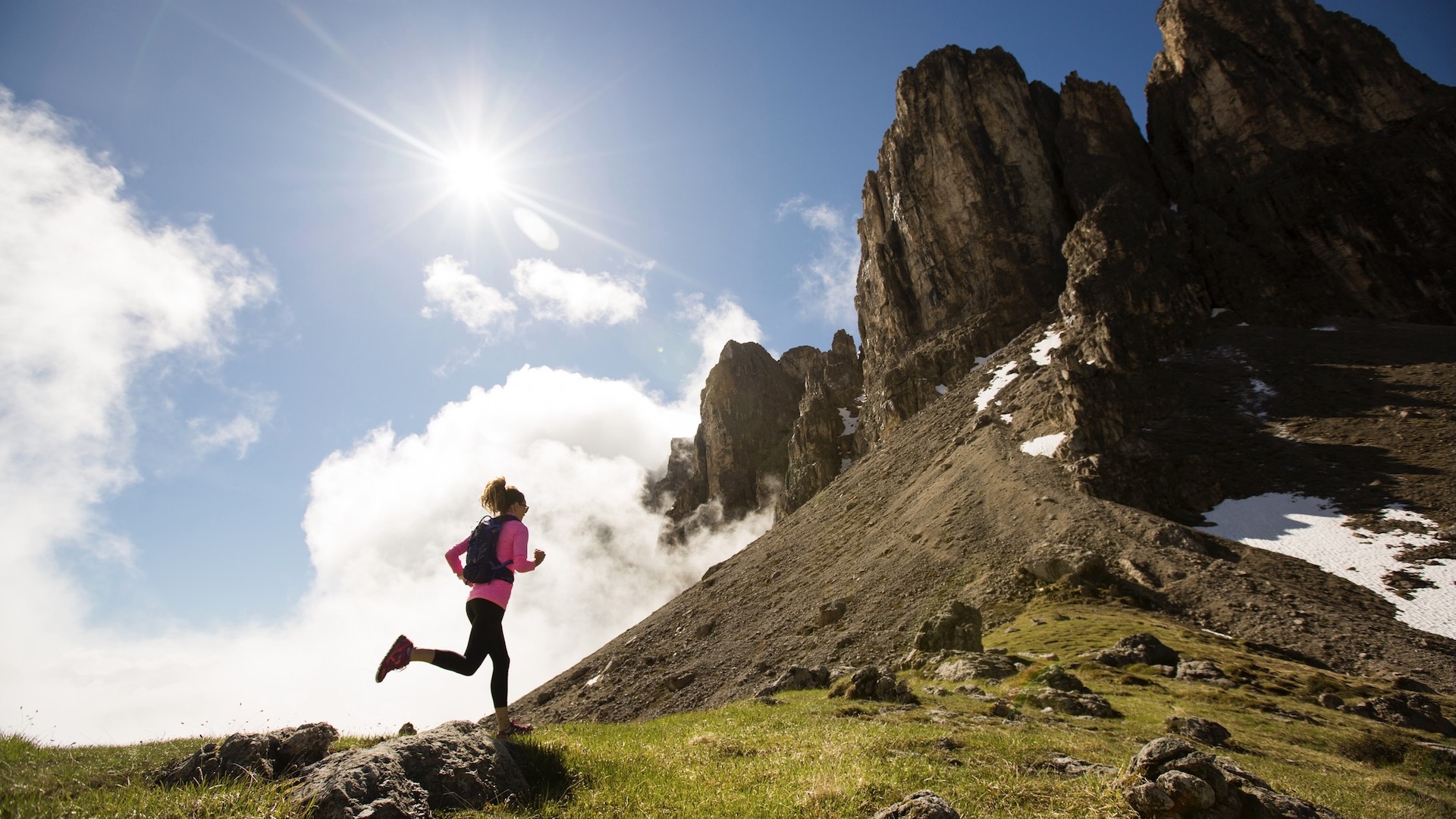A guide to running at high altitude
How to prepare for successful training and races at higher elevation

Running at high altitude, if you are not already acclimatised, can lead to a number of issues, including exhaustion and decreased VO2 Max (the body's ability to use oxygen for energy). Higher heart rate, breathlessness and increased risk of dehydration are also common symptoms of being at higher elevations.
Conditions at altitude in the mountains are also likely to be more severe, such as colder temperatures, higher winds and lower humidity
It’s widely accepted that “high altitude” is above 5000ft, although some reckon it is over 8000ft, and the main difference between running at high altitude and running at sea level is that there is less available oxygen in the air at high altitude.
Everyone is different and we are all affected by high altitude in a variety of ways. Here we suggest a guide to coping and dealing with high altitude when running.
Take time to adjust
The best strategy for transitioning to high altitude running is to take your time, which allows the body to adjust to more limited oxygen supplies.
If you are hoping to run a race at high altitude, it’s a good idea to arrive in the location days – if not at least a week – before the event.
Experts advise building up to the altitude for a race in 1000ft increments over many days. This allows you body to adjust and adapt to the conditions.
All the latest inspiration, tips and guides to help you plan your next Advnture!
Even as a minimal approach, you should spend some time at a mid-way altitude, between where you would normally train and where the race will be. Then, spend more time at the actual altitude.
Don’t try to push yourself to run hard at each altitude, rather you should transition with light exercise and then build up your pace.

Adjust your pace
Your body will crave oxygen, so you will find it much harder to stick to your usual pace at high altitude. Keep a close eye on your heart rate and slow your pace as you build up the days at altitude. It is recommended you keep your heart rate in the “optimal” range.
You need to keep your heart rate at a sensible level as you acclimatise to running at high altitude. It will take time and rushing this process will only lead to fatigue and frustration.
Water and food
Ensuring you stay hydrated and also eat the right foods will aid the process of being able to run at higher altitudes.
The dry air at elevation can quickly dry out your body, so make sure you have water to sip on regularly. Water is vital for enabling red blood cells to circulate oxygen in the lungs. A lack of water is also fatiguing.
When it comes to fuelling, you should stick to the balanced diet you usually follow but add extra calories (check out our guide to what to eat when running). Some studies suggest a low-fat diet is a good idea when running at altitude because it’s thought the body doesn’t digest fat as efficiently at higher elevations. However, for most people it’s a good idea to stick to what you and your body know best.

Be prepared for altitude sickness
Many people feel nauseous at higher altitudes. There are various anti-sickness treatments you can buy from pharmacists. Ask you local chemist before travelling. Travel sickness remedies are sometimes suggested for dealing with altitude nausea.
It is also a good idea to take ibuprofen with you in case of dehydration headaches.
There are other alternative remedies for nausea, such as Ginkgo biloba and ginger. It’s good idea to test these out before heading away for a race because they might not agree with you.
Leg strength
The chances are that if you are running at altitude, there will be a few climbs. It is therefore important to include some leg strengthening exercises in your training programme before heading to higher altitude.
Alcohol and drugs awareness
Alcohol will dehydrate you. To be safe, wait 48 hours after you ascend to a higher elevation to drink.
Also avoid opioids (OxyContin, Vicodin) and benzodiazepines (Xanax, Klonopin) because these can cause respiratory depression
Kit for running at high altitudes
Conditions can be colder, drier and windier at higher elevations, so you will need to be prepared with running kit, including a windproof or waterproof running jacket, a lightweight insulated jacket, running gloves and running headwear, as a minimum list.
Being successful running at high altitude is possible but you do need to prepare beforehand.

Fiona Russell is a widely published adventure journalist and blogger, better known as Fiona Outdoors. She is based in Scotland and is an all-round outdoors enthusiast with favorite activities including trail running, mountain walking, mountain biking, road cycling, triathlon and skiing (both downhill and backcountry). Aside from her own adventures, Fiona's biggest aim is to inspire others to enjoy getting outside and exploring, especially through her writing. She is also rarely seen without a running skort! Find out more at Fiona Outdoors.
